Evolution of EPIRB Testers
The phased implementation of the GMDSS began with the mandatory equipping of vessels with satellite beacons. Its introduction made it necessary to manufacture EPIRB testers.
IMO required the inspection of emergency beacons to be mandatory. According to its requirements, EPIRB testers must provide accurate measurement of the parameters and performance of the emergency beacon in volume of:
-
Annual testing of 406 MHz satellite EPIRBs (Resolution MSC/Circ.1040 Guidelines on annual testing of 406 MHz satellite EPIRBs adopted on 28 May 2002, revised on 25 May 2012 (Resolution MSC.1/Circ.1040/Rev.1));
-
Shore-based maintenance of satellite EPIRBs (Resolution MSC/Circ.1039 Guidelines for shore-based maintenance of satellite EPIRBs adopted on 28 May 2002).
Requirements for EPIRB testers in the past, present and future
From the 1990s to the present, the main requirements for EPIRB testers were as follows: the tester had to measure the 406 MHz channel of EPIRBs and to decode the content of the Cospas-Sarsat message (detailed requirements for the First-Generation EPIRBs are presented in C/S T. 001 – Specification for Cospas-Sarsat 406 MHz Distress Beacons (Issue 4, Rev 2)).
Since 1998 beacons with GPS were presented on the market. So the manufacturers of beacon testers faced a new challenge - to update their devices and its firmware to support the coordinates decoding, which allowed them to test the GPS module performance (previously, the coordinates of emergency beacons were determined using the Doppler effect only).
Nevertheless, GNSS receivers (which include GPS) became mandatory for all EPIRBs only in 2019 (IMO Resolution MSC. 471(101) ANNEX 24).
This resolution also prescribes a number of other important regulations that will come into force in 2022.
According to these requirements, all EPIRBs must be provided with:
-
121.5 MHz channel primarily for homing by aircraft;
-
GNSS receiver for position fixes and an associated indication that GNSS signal reception is satisfactory or unsatisfactory;
-
AIS locating signal.
Thus, in addition to checking the main channel, modern EPIRB testers should have an ability to check the 121.5 MHz homing signal as well as the AIS-SART channel.
All modern testers make measurements at the current frequency of 406 MHz, as well as at 121.5 MHz homing channel. As for AIS technology, it is now available only in the most advanced models of EPIRB testers, and also GMDSS multi testers.
Another modern technology that may be implemented in EPIRBs is a Return Link System (RLS). EPIRBs equipped with GNSS supporting Galileo satellite system should be ready for RLS technology. Galileo's RLS works to ensure the user that the distress signal sent by his beacon was received by the Cospas-Sarsat system - the EPIRB should have an indication that the GNSS signal reception is satisfactory or unsatisfactory.
One more thing is expected by beacon tester industry in the coming years. It refers to the emergence of the Second Generation Cospas-Sarsat 406 MHz Beacons. Their development is caused by the need to reduce, as far as possible, the delay in providing emergency messages to search and rescue services and the time for locating the disaster and providing assistance, which directly affects the human survival at sea and on land.
Second-Generation Beacons (SGB) use a modern, spread spectrum signal to achieve much more accurate and reliable performance, a new type of modulation, and the entire frequency range 406.0-406.1. They also have a new message format that is incompatible with the First-Generation EPIRBS.
Therefore, the EPIRB testers of the near future should be able to make measurements of the Second-Generation Beacons (requirements for them are described in C/S T. 018 - Specification for Second-Generation Cospas-Sarsat 406-MHz Distress Beacons (Issue 1, Rev 2)).
Beacon testers models review
Let's follow the evolution of the EPIRB testers starting from the very first models, some of which have already gone down in history, to models that represent the modern beacon industry.
1988 - Tron DEC 406 MHz Decoder
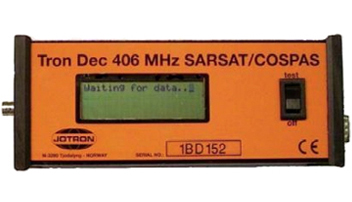
- Manufacturer (country): Jotron (Norway)
- Testing scope: Cospas-Sarsat EPIRBs (406.025 MHz channel)
- Dimensions:
- Available for purchase: no
- GPS signal decoding: no
Jotron has played a major role in the practical implementation of the GMDSS system.
In 1992, since IMO began to introduce the GMDSS, the installation of one 406 MHz float-free EPIRB, two radar transponders and two handheld VHF radios became a mandatory requirement for all vessels falling under the SOLAS convention. From the very beginning of this integrating process, Jotron has been the main supplier of the mentioned emergency radio equipment required to meet these demands.
The company started producing emergency radio beacons in 1970 and these were the world’s first EPIRBs.
The world's first EPIRB tester was also developed by Jotron. Tron Dec was released to the market in 1988-1989 and was able to decode transmission from all existing Cospas-Sarsat beacons, available at the time. It was EPIRB decoder with only one channel 406.025 MHz decoding capability.
1991 - EPIRB Diagnostic tool KIA-K
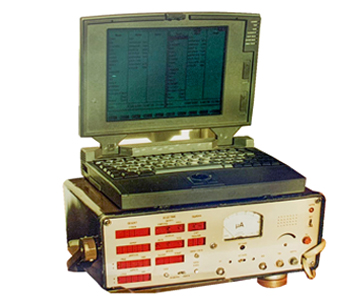
- Manufacturer (country): JSC Musson (Ukraine)
- Testing scope: Cospas-Sarsat EPIRBs (406.025 MHz channel)
- Dimensions:
- Available for purchase: no
- GPS signal decoding: no
The first EPIRB tester of the Ukrainian school of device engineering in the field of development of testers for maritime radio equipment. It was designed by the well-known in the USSR Musson radio equipment plant (JSC Musson) that successfully produced radio equipment for maritime industry for more than 30 years.
The device was specially designed to check the ARB-M EPIRBs manufactured by JSC Musson.
It had a desktop case and was able to show the HEX content of Cospas-Sarsat message without decoding it. Also it performed power level measurements.
The device was manufactured in 1991-1993 and was sold mainly in the former Soviet Union market.
1992 - ARG 5410
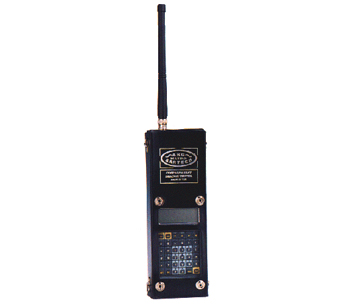
- Manufacturer (country): ARG/Sartech (United Kingdom)
- Testing scope: Cospas-Sarsat (406.025 MHz and 121.5 MHz channels) EPIRBs, PLBs, ELTs
- Dimensions: 255×95×40 mm, 680 g
- Available for purchase: no
- GPS signal decoding: yes
Faults on emergency transmitters may not surface until lives depend on them. This problem became evident for Sartech Engineering, the company that was engaged in servicing emergency beacons.
And then Sartech, in collaboration with ARG Electrodesign, designed the ARG 5410, the first portable EPIRB tester with a PDA-based screen (the keyboard, display and battery management facilities of the PDA were used). The device had a unique ability to program some types of beacons and user-friendly software.
The testing procedure was accompanied by "plain English", which made it easier to decode the received signals.
In the second half of the 1990s, this device was the industry standard for EPIRB testers.
2000 - Tron UniDec EPIRB tester
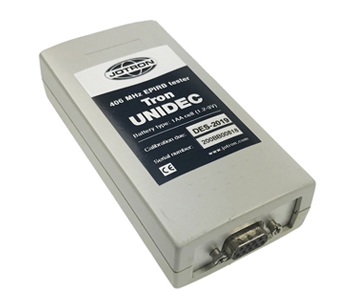
- Manufacturer (country): Jotron (Norway)
- Testing scope: Cospas-Sarsat (406.000-406.100 MHz) EPIRBs, PLBs
- Dimensions: 119x58x30 mm, 170 g
- Available for purchase: yes
- GPS signal decoding: yes
In 2000, Jotron released a completely new EPIRB tester Tron UniDec. The replacement of the previous Tron Dec was caused by the implementation of GPS in EPIRBs and the release of Jotron's new EPIRB Tron 40 GPS.
Tron UniDec is a long-running series of Cospas-Sarsat EPIRB tester that has been available on the market over the past two decades. This is the first EPIRB tester that supported the entire Cospas-Sarsat frequency range: 406.000-406.100.
This model has not changed significantly over the years, either in functionality or form factor. Among beacon testers currently available on the market, only Tron UniDec requires an external computer to operate.
The model performs all the tasks required for such devices. And yet there is no doubt that Tron UniDec is an old product with quite old electrical design with the challenge of components getting obsolete.
2000 - Device for EPIRB diagnostics and control
![]()
- Manufacturer (country): Musson-Morsvyaz (Ukraine)
- Testing scope: Cospas-Sarsat EPIRBs (406.025 MHz and 121.5 MHz channels)
- Dimensions: 200x75x45 mm, 1.5 kg
- Available for purchase: no
- GPS signal decoding: yes
Logical evolution of the diagnostic tool for EPIRBs by JSC Musson.
The tester became handheld, despite remaining quite heavy. Measurements could be made by cable or through broadcast.
Automatic measurement mode was implemented, so all EPIRB parameters could be measured at once. Each parameter could be measured separately.
The device supported only one Cospas-Sarsat frequency - 406.025MHz.
The test results were displayed on the screen and printed on a special device. As practice proved, this way to output information was not a convenient one. It was quickly discontinued in favour of processing the measured results on the PC.
2004 - BT 100
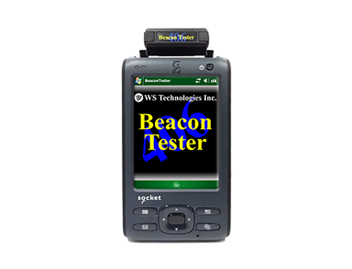
- Manufacturer (country): WST (Canada)
- Testing scope: Cospas-Sarsat (406.0-406.1 MHz and 121.5 MHz channels) EPIRBs, PLBs, ELTs
- Dimensions: 140x77x17 mm
- Available for purchase: no
- GPS signal decoding: yes
One of the world leaders in beacon testing technology. Put forward the slogan "Don’t just decode the beacon ... analyze it".
BT100 was one of the first truly portable EPIRB testers. It supported the entire Cospas-Sarsat frequency range. Due to its large color screen, the device allowed to draw detailed graphics of the 406 MHz power during the burst.
The first device that could measure the 406 MHz phase modulation, and the in-band 406 MHz frequency spectrum.
BT100 allowed measuring the 406 MHz frequency stability.
For the first time, it became possible to make a report directly in the device, without using a PC.
The company also developed a special ruggedized version - Rugged Beacon Testers. It was designed for marine or any rough environment, could handle the toughest field conditions. Met MIL-STD-810F standards for drops, vibration and extreme temperatures. This tester also had an IP67 rating, which meant it was impervious to dust and water immersion.
The device became the de facto standard for the accuracy of EPIRB measurements.
2004 - ARG 5410 MKII
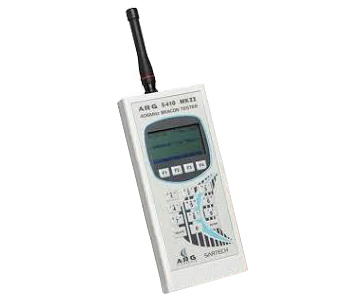
- Manufacturer (country): ARG/Sartech (United Kingdom)
- Testing scope: Cospas-Sarsat EPIRBs (406.020-406.030 MHz and 121.5 MHz channels), ELTs, PLBs
- Dimensions: 195x87x52 mm, 540 g
- Available for purchase: yes
- GPS signal decoding: yes
The second generation of the EPIRB tester from the British manufacturers. “New version of industry standard tester", as they described their updated product.
The device became lighter and more compact. The manufacturers moved away from using PDA as the basis and designed the device in its own case.
The main difference from the first generation was the ability to measure power (RSSI) in both channels 406 and 121.5 MHz.
The device is still in production and available to buy (serviced by Sartech).
2005 - Beacon Tester 406 02

- Manufacturer (country): Musson-Morsvyaz/Musson Marine (Ukraine)
- Testing scope: Cospas-Sarsat (406.020-406.040 MHz and 121.5 MHz channels) EPIRBs, PLBs
- Dimensions: 200x100x45 mm, <1 kg
- Available for purchase: no
- GPS signal decoding: yes
Beacon tester 406 02 (1 generation) was a joint development of two Ukrainian companies - Musson-Morsvyaz and Musson Marine. Compared to the previous version, released by Musson-Morsvyaz, this model beacame significantly lighter, had smaller size and more user-friendly interface.
The device supported a limited set of Cospas-Sarsat frequencies but extended comparing to previous generation. It had some problems checking EPIRBs from various manufacturers.
2010 - Beacon Tester 406 02
![]()
- Manufacturer (country): Musson Marine (Ukraine)
- Testing scope: Cospas-Sarsat EPIRBs (406.020-406.040 MHz and 121.5 MHz channels), PLBs, ELTs
- Dimensions: 195x101x43 mm, 350 g
- Available for purchase: no
- GPS signal decoding: yes
The second generation of beacon testers from Musson Marine.
The device became really portable, had a new screen (with backlight), which allowed to create a new, very convenient interface with the possibility to view measured results. Added the ability to make measurements not only through the antenna, but also via cable connected to EPIRB or shielded box, which increased the accuracy.
Now one could connect the tester to a personal computer using a USB cable to save results and automatically generate reports.
It became possible for the first time to generate automatic reports of annual surveys and shore-based maintenance in IMO-required format.
Another new feature provided by the manufacturer was the ability to measure frequencies and RSSI levels and save test results of separate channels in one which allowed to use them in report generating.
The tester supported a limited frequency range of Cospas-Sarsat (406.020-406.040 MHz).
406 MHz Beacon Tester was manufactured for more than 10 years. It was widely used in the world and has shown excellent results in checking EPIRBs from various manufacturers, high reliability in both production and operation.
2016 - BT 406 Mini/WiFi
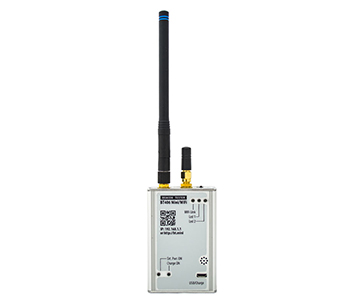
- Manufacturer (country): Aeromarine SRT/former Musson Marine (Ukraine)
- Testing scope: Cospas-Sarsat (406.0-406.1 MHz and 121.5 MHz channels) EPIRBs, PLBs, ELTs
- Dimensions: 83x54x19 mm, 150 g
- Available for purchase: yes
- GPS signal decoding: yes
One of the most compact devices on the market that really fits in the pocket. Aluminium casing made it lightweight and damage resistant. The small form factor is achieved due to the ability to connect to any mobile device: smartphone, tablet, laptop.
All platforms are supported. The only requirements are Wi-Fi and a browser.
The device fully complies with all IMO standards and requirements. Allows to measure the parameters of the 406 and 121.5 MHz channels, as well as decodes on flow the content of the Cospas-Sarsat message. The entire Cospas-Sarsat frequency range is supported.
Compatible with any mobile phone or tablet.
BT 406 Mini/WiFi makes it possible to generate any type of IMO-required reports directly from the mobile phone.
It’s the most attractive device of this kind on the market at a price.
2017 - BT200
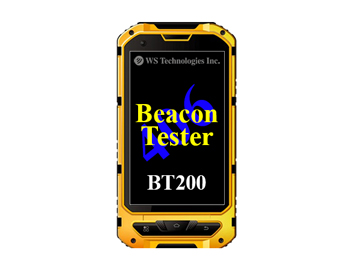
- Manufacturer (country): WST (Canada)
- Testing scope: Cospas-Sarsat (406.0-406.1 MHz and 121,5 MHz channels) EPIRBs, AIS-EPIRBs, PLBs, ELTs
- Dimensions: 135x70x20 mm, 222 g
- Available for purchase: yes
- GPS signal decoding: yes
Based on the features of its previous version, the BT100, the BT200 offers improved measurement capabilities. This is a fully integrated and robust device. A large number of measuring capabilities in a very small package. AIS measurements have been added to the extensive list of functions of the tester.
The device allows to make all the necessary IMO measurements and much more, including in-band spectrum and frequency instability. Now the device does not require the use of attenuator.
Waterproof rating of BT200 raised to IP68.
The manufacturer announced the tester is ready for testing the Second-Generation EPIRBs.
The tester has the most advanced features comparing to others what is completely paid by the highest price on the market.
2017 - VRI8
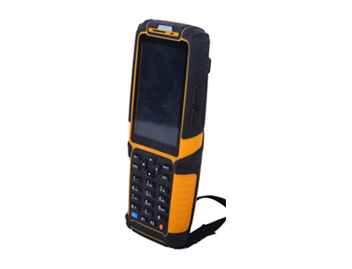
- Manufacturer (country): CETC Maritime Electronics Ltd (China)
- Testing scope: Cospas-Sarsat (406.0-406.1 MHz and 121.5 MHz channels) EPIRBs, PLBs, ELTs
- Dimensions: 103x55x25 mm
- Available for purchase: yes
- GPS signal decoding:
EPIRB tester from Chinese manufacturer: small size, light weight, low power consumption.
The manufacturer declared compliance with IMO requirements. The device is sold mainly on the domestic market of China.
2018 - Beacon Tester 406 02
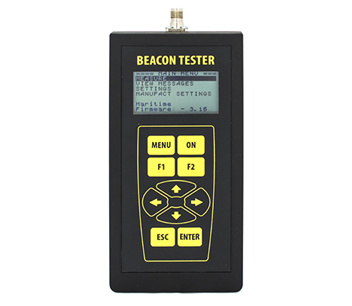
- Manufacturer (country): Aeromarine SRT/former Musson Marine (Ukraine)
- Testing scope: Cospas-Sarsat (406.0-406.1 MHz and 121.5 MHz channels) EPIRBs, PLBs, ELTs
- Dimensions: 195x101x43 mm, 350 g
- Available for purchase: yes
- GPS signal decoding: yes
Updated version of one of the most popular EPIRB testers on the market.
The changes mainly concerned the device appearance: the new case is made of more wear-resistant materials and has a brighter design.
The range of supported Cospas-Sarsat frequencies was increased: 406.0-406.1.
The device is compatible with the latest software of the Aeromarine SRT, the company that has taken the generating of automatic reports to a new level.
The cloud version of saving measurements and generation test reports in IMO format are supported.
Conclusion
Test equipment for EPIRBs has its own development path and it’s directly linked to the history of the beacon industry.
Increased maritime safety standards require test equipment to meet them. As a result, beacon testers change both inside and outside: their functionality expands, they become more reliable and convenient to use.
Initially, EPIRB testers were required to measure the parameters of channel 406 and to decode the Cospas-Sarsat message. With the increasing demands of the industry this was not enough. The testers of the near future will have to check beacons equipped with:
-
RLS ready GNSS receiver;
-
internal AIS-SART;
-
121.5 MHz channel along with the 406 MHz channel.
The new standards also require more thorough measurement of the beacons parameters to ensure that they will work properly in a disaster situation.
Modern manufacturers of EPIRB testers strive to act ahead of the curve. They produce devices that not only meet the requirements of the relevant authorities, but also exceed them in certain characteristics.
By Olga Davydova
This article is one in a series of GMDSS testers history research. Welcome to the full edition:
Intro: Evolution of testers for GMDSS radio equipment
Part 1. Evolution of EPIRB testers
Part 2. Evolution of GMDSS MF/HF/VHF testers
Part 3. Evolution of SART testers
Part 4. Evolution of AIS testers
Part 5. Evolution of GMDSS multi testers
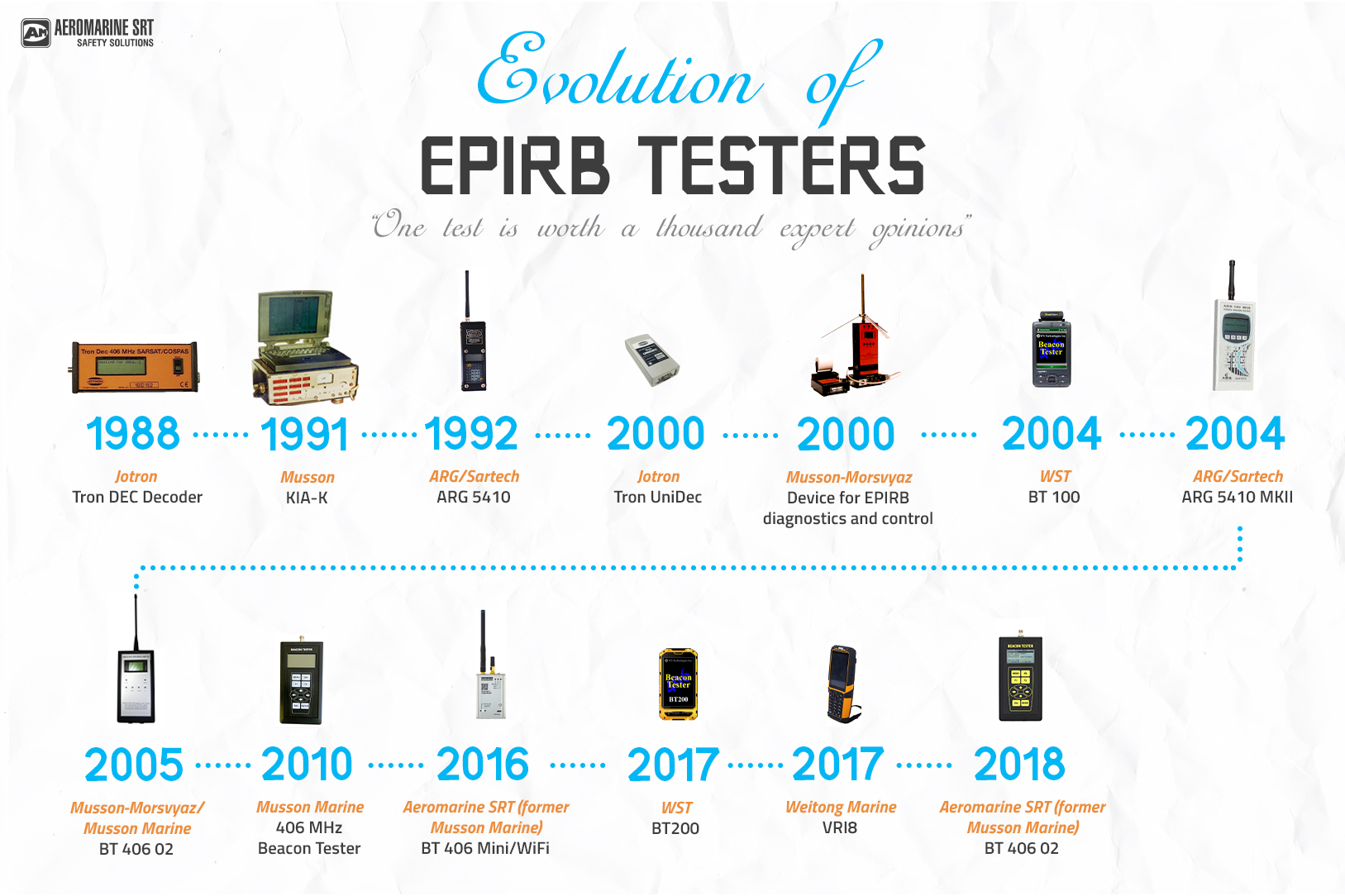


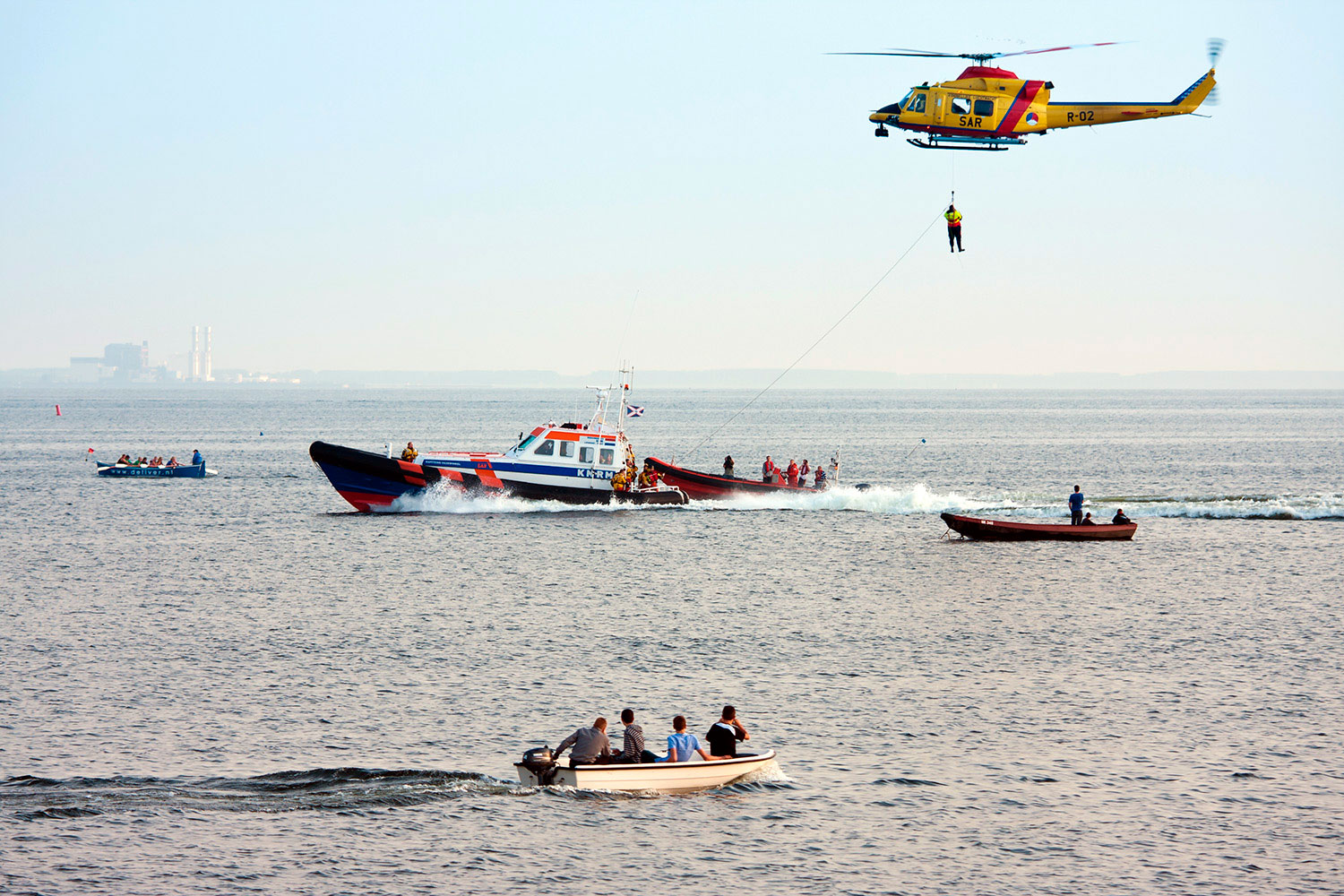
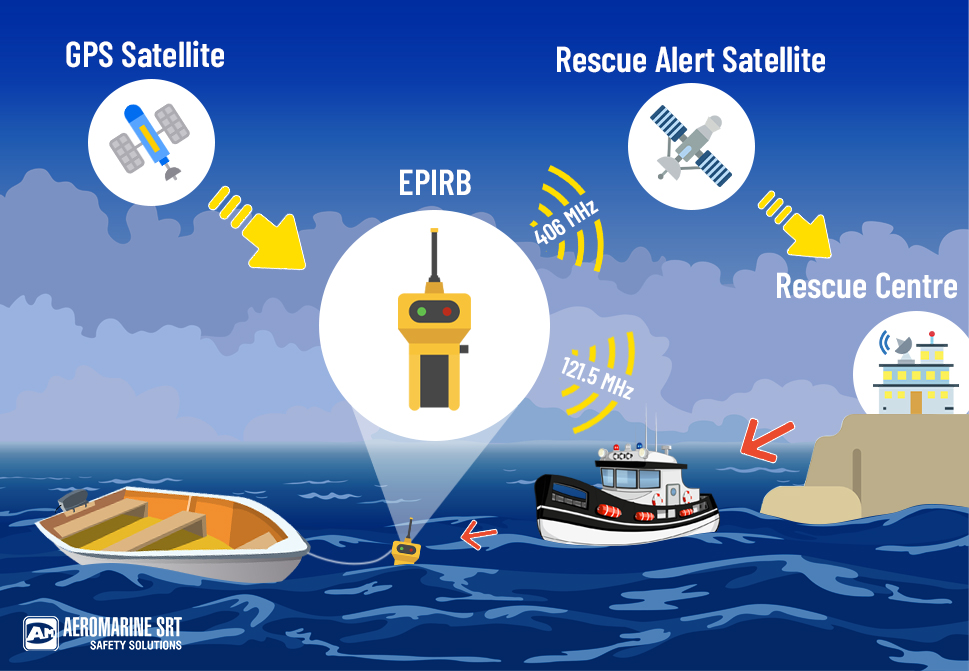

Be the first to comment